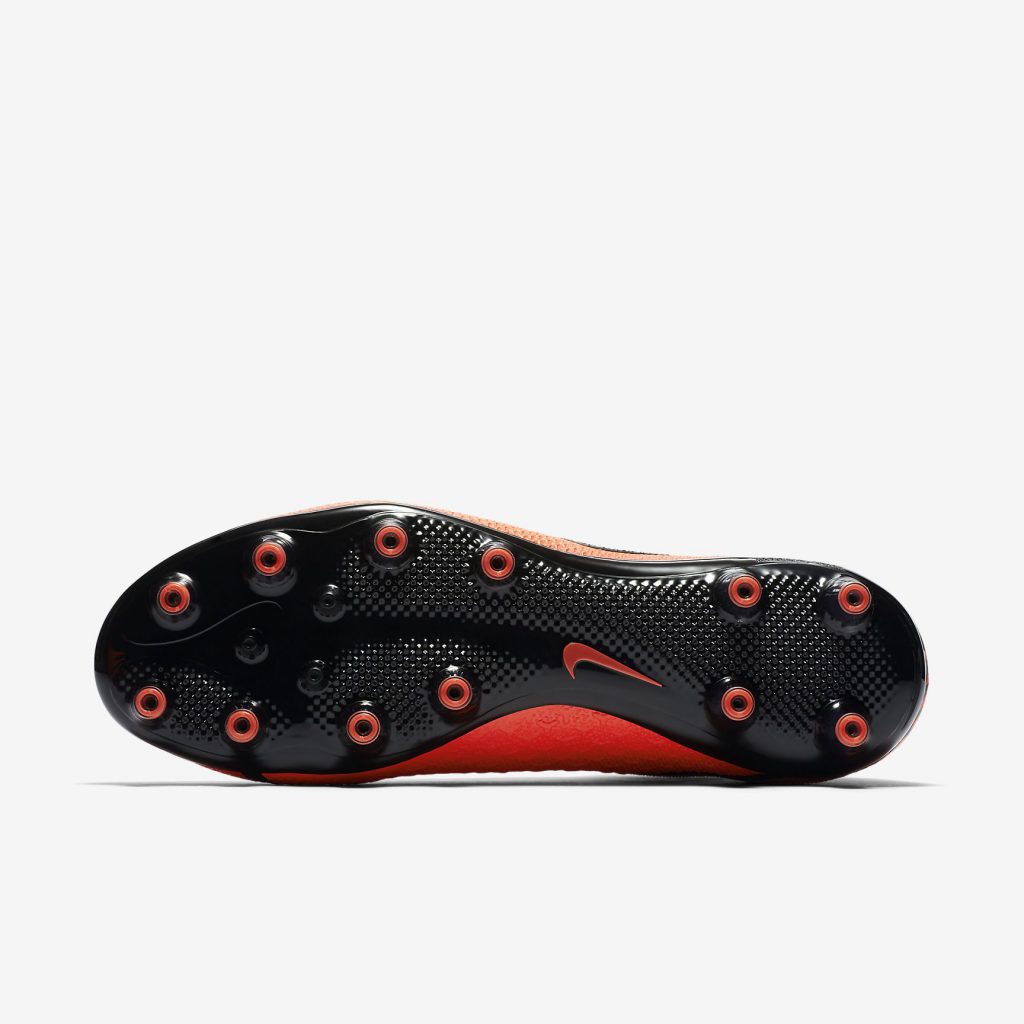What’s the difference between FG and AG sole plates and why should you care?
Artificial Grass (AG) cleats look like this:
Firm Ground (FG) cleats look similar to this:
Perfect for natural grass surfaces, FG cleats are designed to really “dig in” past the top layer of grass to the firm ground below. When turning and cutting, the grass will give way/break without excessive force so the FG cleat design can be much more aggressive to hold its place until the surface breaks. Artificial grass doesn’t tear like natural grass so when you wear FG studs on an AG field, the twisting force is instead transferred to your joints- ankles, knees, hips. Not good! Here are a few more reasons to consider AG:
Health and Safety- protect your joints!
AG studs allow the cleat to move/rotate more freely even when dug into artificial surfaces. When your cleat gets “stuck” in the surface while you’re attempting to turn, bad things happen to your joints. Is it worth the risk? Read more about the potential for injuries.
Performance
Can you wear golf shoes to a bowling alley? Sure! We believe in using the right equipment for the job. AG sole plates are specifically designed for maximum, safe traction on AG pitches.
Warranty
The Nike 2 year limited warranty specifies that if the shoes are used in a manner that they were not intended, the warranty is void. Use of FG cleats on AG surfaces is clear misuse. It is very easy to tell if an FG cleat has been used on an AG surface potentially leaving you without a warranty.
Comfort
A study conducted in 2007 found the maximum surface temperature of green artificial turfgrass was approximately 69 degrees F higher than that of irrigated natural grass…and data was not even collected during the hottest months of the year! Read more.
Researchers from the University of Nevada, Las Vegas and the Desert Research Institute
If you’ve ever played on artificial grass on a hot summer day, you probably already know the surface gets extremely hot. AG studs are hollow, in part, so that this excess heat is more easily dissipated. Solid studs retain heat which can cause discomfort and durability problems (more on that below). Nobody likes HOT, sweaty feet. AG cleats are constructed with a layer of heat shielding material to reduce the transfer of heat to your foot.
Reduced stud pressure on the bottom of your foot is another benefit of going AG.
Durability
Plastic cleats wear down MUCH more quickly when heated up and softened. AG surfaces and the rubber pellets that cover them are notorious for retaining heat and get much hotter than natural grass. This heat transfers to the cleat and is much harder on the materials. AG cleats are made to withstand this extra intense abuse.
The Nike AG sole plate was also designed to cover more of the toe to prevent premature wear and splitting of the upper. AG surfaces are extra abrasive and the added friction and heat will make FG cleats and their upper at the toe seam break down much faster than they should.
AG is on the right. Toe protection- a subtle but important design difference.







